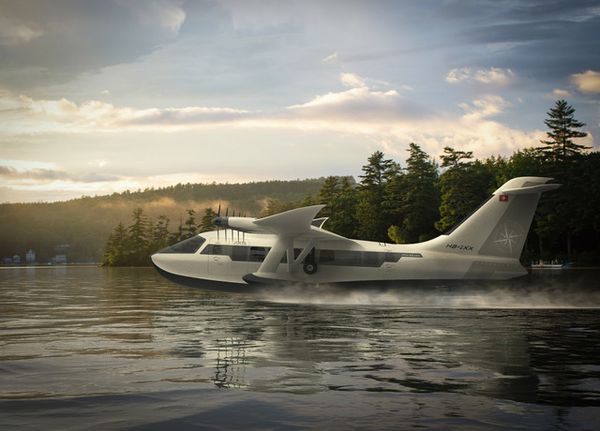Airbreathing and non-airbreathing engines make up the two main categories of aerospace engines. For simplicity, Airbreathing engines (also known as airbreathers) function by utilizing the air that the aircraft is flying through, both as an oxidizer for the fuel in the combustion chamber and as a working fluid for thrust generation. Non-airbreathing engines are rocket engines in which the propellant gas is produced aboard the vehicle. A rocket engine is a type of jet propulsion system that generates thrust by ejecting stored substances known as a propellant.
Airbreathing engines are divided into 2 types: reciprocating engines and jet engines. The Wright brothers' first successful flight was propelled by a piston engine. Up until jet engines took over, it remained the predominant source of propulsion for aircraft. Piston engines with water-cooled engines were utilized from 1903 to 1908. Excess drag and weight created by liquid-cooled engines hampered airplane performance at the time. In 1908, liquid-cooled engines had been replaced by air-cooled ones, resulting in weight reductions of up 40%. However, the performance of these air-cooled engines fell short of expectations. To increase the efficiency of air-cooled aircraft, The National Advisory Committee for Aeronautics (NACA) created a cowling that encased the engine. This engine enclosure restricted the passage of air over the engine cylinders to air in contact with the cooling fins of the cylinders.

However, piston engines were much too heavy to compete with jet engines in terms of power output. The capacity to fly at greater altitudes and at faster speeds with simpler control is one of the most evident benefits of jet engines versus reciprocating engines. The increased airflow makes cooling less difficult. On the other hand, the continuous ignition system of the reciprocating engines is not required, spark plugs are only utilized for the startup. There is no need for a carburetor or a mixture control.
The first jet engines appeared in the 1940s, and during the next 60 years, they underwent enormous progress that has continued to this day. Whether they are turbojets, turbofans, or turboprops, the engines utilized in some aircraft applications are all collectively referred to as "jet engines."
Why Fast Price Estimation Has Become Critical for Brokers and Clients » U.S. Government Admits Liability in Fatal Mid-Air Collision » Memphis at Midnight: Inside FedEx's Global Superhub »
Comments (0)
Add Your Comment
SHARE
TAGS
INFORMATIONAL Aerospace EnginesAviationClassificationRECENTLY PUBLISHED
 Cities in the Sky: The Future Built on eVTOL Flight
Imagine stepping out of your office, walking to a nearby rooftop, and moments later lifting off vertically into the sky — no airport lines, no traffic, just a silent hop across the city. This future is no longer science fiction; it's the foundation of what could be aviation's biggest innovation since the jet age.
INFORMATIONAL
READ MORE »
Cities in the Sky: The Future Built on eVTOL Flight
Imagine stepping out of your office, walking to a nearby rooftop, and moments later lifting off vertically into the sky — no airport lines, no traffic, just a silent hop across the city. This future is no longer science fiction; it's the foundation of what could be aviation's biggest innovation since the jet age.
INFORMATIONAL
READ MORE »
 The Runway is Obsolete: Jekta Swiss is Resurrecting the Flying Boat for the 21st Century
AeroXplorer sat down with George Alafinov, CEO & Co-founder of Jekta Swiss. In conversation, he discussed the company's unique value proposition and how he sees his aircraft revolutionizing the amphibious aircraft industry.
STORIES
READ MORE »
The Runway is Obsolete: Jekta Swiss is Resurrecting the Flying Boat for the 21st Century
AeroXplorer sat down with George Alafinov, CEO & Co-founder of Jekta Swiss. In conversation, he discussed the company's unique value proposition and how he sees his aircraft revolutionizing the amphibious aircraft industry.
STORIES
READ MORE »
 Why Fast Price Estimation Has Become Critical for Brokers and Clients
In today's private aviation market, speed is no longer a "nice to have." It's an expectation. Brokers, operators, and clients all work under tighter timelines, higher price sensitivity, and far less tolerance for vague answers. When someone asks, "How much will this flight cost?" they don’t want a rough guess tomorrow; they want a credible answer now.
INFORMATIONAL
READ MORE »
Why Fast Price Estimation Has Become Critical for Brokers and Clients
In today's private aviation market, speed is no longer a "nice to have." It's an expectation. Brokers, operators, and clients all work under tighter timelines, higher price sensitivity, and far less tolerance for vague answers. When someone asks, "How much will this flight cost?" they don’t want a rough guess tomorrow; they want a credible answer now.
INFORMATIONAL
READ MORE »



